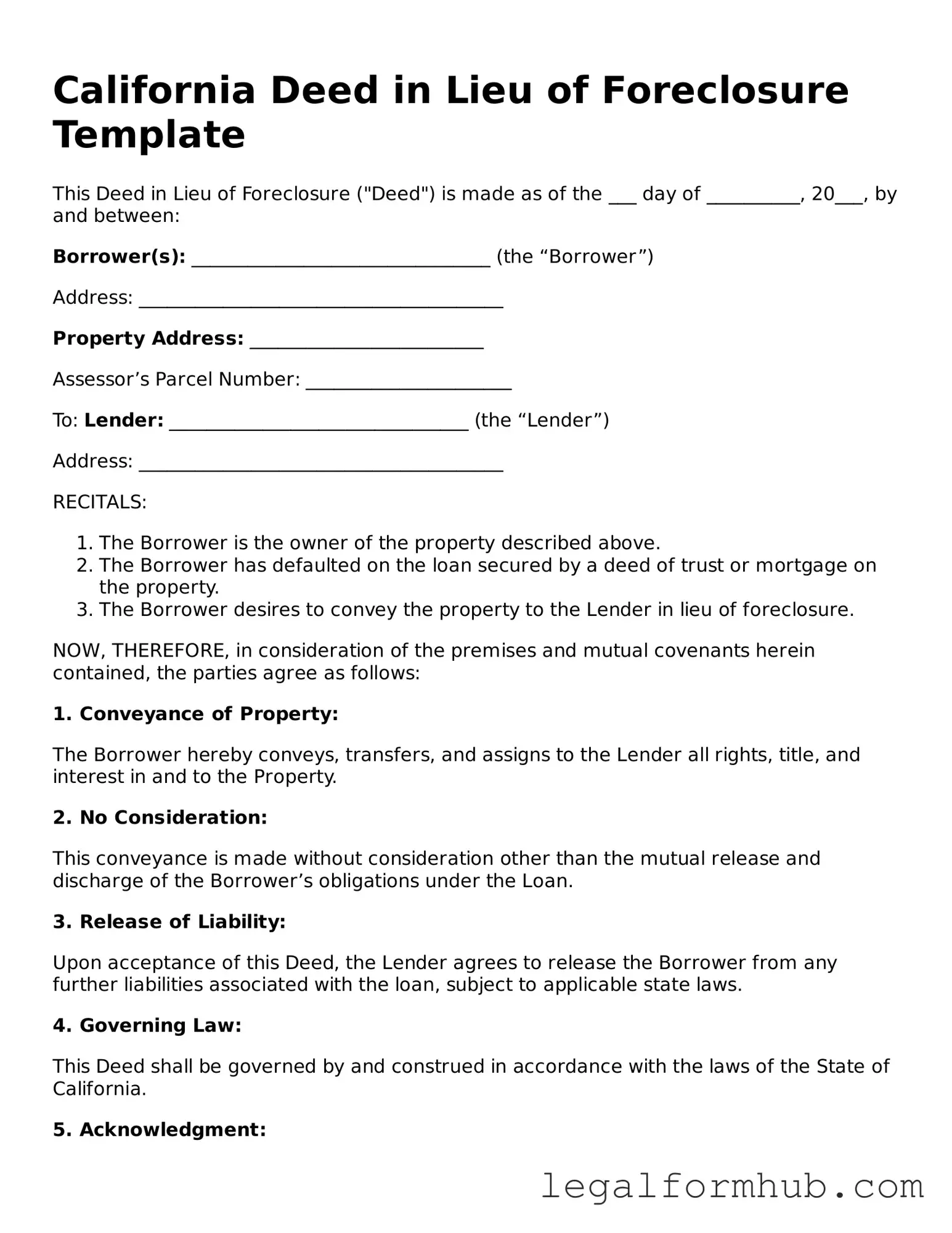The California Deed in Lieu of Foreclosure form is similar to a mortgage modification agreement. Both documents aim to provide a solution to homeowners facing financial difficulties. A mortgage modification agreement alters the terms of an existing loan, potentially reducing monthly payments or extending the loan term. This can help the homeowner avoid foreclosure by making the mortgage more manageable. In contrast, a deed in lieu transfers ownership of the property back to the lender, allowing the homeowner to walk away from the mortgage without further liability. Both options seek to mitigate the impact of foreclosure on the homeowner's credit and financial situation.
For those looking to understand the necessary paperwork, an informative resource is the comprehensive guide on the Trailer Bill of Sale form that outlines its importance in trailer ownership transfers.
Another document that shares similarities with the Deed in Lieu of Foreclosure is a short sale agreement. In a short sale, a homeowner sells their property for less than the amount owed on the mortgage, with the lender's approval. This process can prevent foreclosure while allowing the homeowner to move on from a financially burdensome situation. Like a deed in lieu, a short sale can be less damaging to the homeowner's credit than a foreclosure. However, a short sale requires finding a buyer and can take longer to complete than a deed in lieu, which is a more direct transfer of ownership.
A third comparable document is a forbearance agreement. This agreement allows a homeowner to temporarily pause or reduce mortgage payments due to financial hardship. During this period, the lender may agree not to initiate foreclosure proceedings. While a forbearance agreement provides immediate relief, it does not resolve the underlying debt. In contrast, a deed in lieu of foreclosure relinquishes the property entirely, providing a more permanent solution. Both documents aim to assist homeowners, but they cater to different stages of financial distress.
The fourth document that resembles the Deed in Lieu of Foreclosure is a bankruptcy filing. Filing for bankruptcy can provide homeowners with protection from creditors and an opportunity to reorganize their debts. Chapter 13 bankruptcy, for instance, allows individuals to create a repayment plan over three to five years. While bankruptcy can stop foreclosure temporarily, a deed in lieu offers a more straightforward resolution by transferring property ownership to the lender. Both options can relieve financial pressure, but bankruptcy involves a more complex legal process.
Similar to the Deed in Lieu of Foreclosure is a loan assumption agreement. In this arrangement, a buyer takes over the existing mortgage from the seller, assuming responsibility for the remaining debt. This can be beneficial for sellers who wish to avoid foreclosure. While a deed in lieu involves relinquishing ownership to the lender, a loan assumption allows for the continuation of the mortgage under new ownership. Both documents can facilitate a smoother transition out of a financial crisis, but they operate under different circumstances.
Lastly, a real estate deed transfer is another document that shares similarities with the Deed in Lieu of Foreclosure. A deed transfer occurs when property ownership is conveyed from one party to another, often without a mortgage involved. While a deed in lieu specifically addresses the transfer of property to avoid foreclosure, a general deed transfer can happen for various reasons, such as sales or gifts. Both processes involve the transfer of property rights, but the intent and implications differ significantly, particularly concerning the underlying financial obligations.
